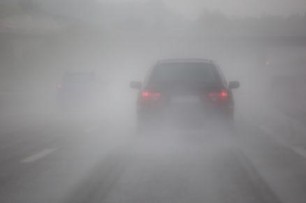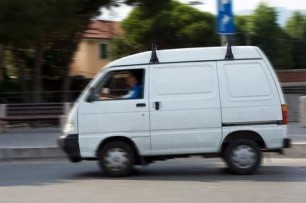General Insurance Blogs, Articles & Updates by - Magma HDI
Have us call you
- RENEW YOUR POLICY
- BUY NEW POLICY

Five effective benefits of implementing the Pomodoro Technique
There are several techniques for time management out there, but as tasks pile up and burdensome thoughts loom, sustaining momentum is critical. If you're concerned about the time factor, the Pomodoro Technique might assist you in completing your to-do list.
Francesco Cirillo, a university student in the 1980s, developed a practice of utilising a tomato-shaped kitchen timer to keep himself motivated while studying. As a result, the Pomodoro technique was developed – Pomodoro in Italian means a Tomato!
Individuals from different walks of life have used this strategy to overcome procrastination. Today, we will see how it works and how it can benefit you in five ways. Let's begin, shall we?
Steps to practice the technique:
Before we begin, let us tell you, here, one Pomodoro is equivalent to 25 minutes.
• Create a to-do list for the day
• Determine the number of Pomodoros you will devote to each activity
• Set the timer to one Pomodoro
• Concentrate entirely on that activity until the timer goes off
• Take a break of 5 minutes
• Proceed to the next Pomodoro after the break
• Take a longer rest after every fourth Pomodoro
Five benefits of the Pomodoro Technique.
1. Helps you break the habit of procrastination:
This technique will help you battle procrastination and stay focused. You know when and how long you have to work using this strategy, so you don't have to convince yourself into working since it's already planned for you.
The Pomodoro method has helped many persistent procrastinators get free of their habit and genuinely enjoy their job throughout the years.
2. Fights distractions:
The Pomodoro technique helps you create a habit of pushing the distracting tasks such as scrolling your social media feed, checking emails, and other stuff by moving them to the 5-minute window you get after each Pomodoro. You will struggle initially, but once you are hooked to it, say goodbye to the distractions.
3. Work seems like a game:
The timer serves as a countdown for the job at hand, and you'll feel as though you're racing against time to "complete a level." With such an approach, the Pomodoro method improves your productivity by providing fun and breaking up dull periods with a challenge.
4. Keeps your motivation going:
It's an exhilarating race to complete tasks before you run out of time. This thrill drives you to work quicker, even when you typically slow down. These minor surges of inspiration help you stay motivated and keep you focused. You are your competition.
5. Decreases physical and mental discomfort:
One of the huge pros of the Pomodoro Technique is the frequent breaks. After each Pomodoro, you can get up to stretch your legs/back, hydrate, or just stroll around. These short activities help you reduce the onset of physical discomfort caused by sitting at a desk for a prolonged period. Similarly, allowing your mind to wander momentarily throughout the day decreases daytime fatigue, and when you feel physically and mentally well, you get more done.
The Pomodoro Technique allows you to immediately get in the zone and give your best in the shortest amount of time. A considerable number of people have implemented this strategy to date; many have even mentioned this technique being the key to establishing work/life balance in their books.
Apart from maintaining a perfect time management regimen, checking your health and fitness is equally essential. Focus on consuming a healthy diet, following a regular exercise routine, and adopting practices that further safeguard your health and mental fitness. Invest in a good health insurance cover and post purchasing, never miss out on the health insurance policy renewal. Keep it up-to-date to enjoy the benefits without interruption.
So, start today. Make your to-do list now and bring a positive change in your life.
Click HERE for your health insurance policy renewal.
Disclaimer: The information provided above is for illustrative purposes only. To get more details, please refer to policy wordings and prospectus before purchasing a policy.

Running a food delivery business? Here are some important tips you must follow
Technology is paving the way for convenience in all businesses, and even food delivery businesses are taking advantage of it. In today’s fast-paced life, people find online food services most helpful. They love it when their favourite dish is ordered and delivered through online food delivery apps.
According to studies, the food delivery business is rapidly growing in India at a 25 to 30% rate. This opens yet another stream for entrepreneurs to dive in to cater to the expectations of urban middle-class Indians. If you are thinking about running a food delivery business, here are a few essential tips you should consider.
1. Get a targeted audience:
Before setting your food delivery business, you need to spot your potential customers, their buying behaviour and eating habits to give you better insights about
• What do they like to order, which cuisine attracts them more?
• When do they place orders the most, lunchtime, evening snacks, or dinnertime?
• Where is the maximum order coming from? Is it their homes or the workplace?
2. Be discoverable online:
Since the large urban population places online food orders, having a mobile application makes your businesses discoverable and accessible to potential customers. But, to get an edge over your competitors, you need to carefully address the frustrations and expectations of customers in the food business. Have an impactful website or app and add it with high-quality images and a variety of food and restaurant menus. Keep the user-friendly interface right from searching for restaurants to selecting the dish and finally making the payment and getting the food delivered. Regularly update your app and website to fix the bugs and add security patches to provide uninterrupted services.
3. Delivery network:
Hire delivery staff that are experienced and reliable. Verify all the documents such as the valid driving licence or previous work experiences before appointing them. Remember that the delivery vehicles should also have valid registrations papers and 2 wheeler insurance. In haste to deliver the order, don't allow staff to break the laws. So, if you don't have an insurance policy, you can quickly buy 2 wheeler insurance online to save time and keep running your business uninterrupted.
4. Legal license and documentation:
To run any business, you need to have proper licenses and government approvals. Get all the government-authorized documents such as shop act license, health trade license, NOC from the municipality, GST registration, trademark registration, business permit, and E-commerce agreement.
5. Marketing and promotions:
You must have a perfect brand name and a tagline to ensure that it catches the eyes immediately. Then, design a brand guideline, specify all the important details like logo, colours, and highlight your business’ USPs that make you better than competitions.
Consider implementing launch ads marketing campaigns with some discount to draw traffic to your website. You can also flash exclusive festive offers or weekend bonanzas to attract more customers. Discuss these offers and terms with your partner food joints to collaborate and promote these offers on your official social media pages.
With every repeat order and a new customer, you taste the success of the business. Remember to impart adequate training to your delivery staff on hygiene, personal care, healthy customer interactions with other drivers and food joint owners as they represent your brand all the time. Also, consider their well-being, ensure they drive safely, and your vehicles are insured. In case you haven't thought yet on these lines, consider taking a 2 wheeler insurance online.
The food delivery business has made it easier for everyone to buy from the local restaurants without going out. The growth of the 'cashless economy' has also contributed significantly to the digital food ordering business. So, capitalize your food delivery business, bring small restaurant owners, deliverymen, and technology together and turn it into a big cloud kitchen to reach every home and win every heart!
Click HERE to buy a 2 wheeler insurance online with a few clicks.
Disclaimer: The information provided above is for illustrative purposes only. To get more details, please refer to policy wordings and prospectus before purchasing a policy.

The complete guide to learning boxing and training your muscles rigorously
When it comes to a superb full-body workout that can help you grow muscle while also improving your cardio, look no further. Boxing has lately gained popularity as physical activity, particularly among women. There are multiple health and fitness advantages to boxing workouts. It would not only keep your fitness at its optimum, but can do wonders for your mental health as well.
It's a terrific method to enhance physical fitness while simultaneously engaging your mind and body in stimulating activities. People who box as an exercise commonly use a punching bag to help reduce the risk of injuries. However, you must also have the best personal accident policy in India to protect yourself in the event of an accident.
What are the benefits of boxing exercises in terms of health and fitness?
1. Weight loss:
When it comes to burning calories quickly, boxing is a close competitor to exercises like jogging and cycling. It is a high-intensity endurance activity for everybody, regardless of age or physical fitness level. In other words, no matter how great of an improvement you make in your endurance through boxing, you'll always be burning calories.
2. Improved coordination:
Although it takes significant physical effort, boxing necessitates mental concentration and demands high focus. It holds the objective of hitting your opponent while avoiding hurting yourself. To be safe and perform well, you must have excellent hand-eye coordination, as well as good footwork and balance. When competing in boxing, you must use every part of your body in coordination, uncommon in other sports.
Understanding this and putting it into practice throughout your training will significantly enhance your coordination and awareness in the ring and in daily life. In addition, boxing can help you develop greater self-awareness and confidence as physical activity.
3. Stress reduction:
Boxing is an excellent technique to work out while releasing stress in the body and expelling frustrations from the day's activities. Releasing tension through physical interaction is an effective method of stress reduction. In addition, you may experience increased joy due to the release of endorphins that elevate your mood.
4. Shaping your body muscles:
Boxing needs you to engage every muscle in your body by moving it constantly. You use your muscles to gain power by throwing punches and shifting your legs to change positions. As you train rigorously, your muscle mass and strength will grow together. Activating your complete body, including your core, will result in a more active and healthier you.
5. Improved self-discipline and mental resilience:
The intense nature of boxing workouts makes them an excellent way to quickly build both physical and mental toughness. It will push you to your boundaries, asking you to do things you didn't realise you could achieve before starting. Gradually you will start gaining confidence in yourself, and the regular routine will bring discipline to your day-to-day activities as well.
Boxing is the most enjoyable form of exercise you will ever experience which is one of the most crucial aspects of any fitness regimen. When it comes to boxing, having the best personal accident policy in India is usually a good idea because it keeps you protected from injuries that could hamper your progress or training.
Click HERE to buy the best personal accident policy in India.
Disclaimer: The information provided above is for illustrative purposes only. To get more details, please refer to policy wordings and prospectus before purchasing a policy.

Tips to minimise the risks of driving in fog
There are times when driving becomes challenging due to extreme weather. While you might be a seasoned all-terrain driver, it is still a better choice to park your car and wait for the rough weather to pass. But if you have no other option, then inculcating some of the steps mentioned below will help you prevent accidents on the road.
1. Follow a Slow and Steady pace:
While it is no surprise that speeding is dangerous, one must be extra cautious in foggy conditions. Since most of your vision is blocked due to the dense fog, and you might not know what's ahead of you, it is best to stick to the lower end of your speedometer.
2. Distance between vehicles:
It is always a safer idea to stay a considerable distance away from the vehicle in front of you. As mentioned, due to low visibility, it is difficult to predict what might be ahead. So maintaining the said distance can be a boon in case of sudden breaks.
3. Stick to low beams:
Since visibility is the biggest challenge of driving in fog, low beams are your best shot at being able to see what's right in front of you. High beams would serve no useful purpose as the fog will mask everything ahead of you.
4. Follow the line:
There is always a risk of losing the road during fog. A safety hack you can try is to stick to the lines on the side of the road. This will help you stay within the lane and not lose track of the road.
5. Use wipers:
Using the wipers constantly to ensure a clear vision is a must. Always replace your wipers if the rubber is worn out to avoid the hassle if any situation arises.
6. Keep windows open:
Keeping your windows open is a huge advantage because it gives you an idea of the traffic situation outside and helps you hear other cars and vehicles on the road.
7. Turn signals:
The traffic behind you will depend on your taillight for navigation. Ideally, you should use your turn signals way before you typically would. This will give the vehicles behind you ample time to change directions or hit the brakes.
7. Turn signals:
The traffic behind you will depend on your taillight for navigation. Ideally, you should use your turn signals way before you typically would. This will give the vehicles behind you ample time to change directions or hit the brakes.
8. Parking lights:
If you decide to park your vehicle, do it away from the road and turn on your parking lights so that the traffic coming from either side can see your car and avoid a collision.
These are a few tips that you can follow if you are driving through fog. Your safety is of utmost priority, so avoid driving in fog as much as you can. As a responsible driver, it is your duty to be safe and keep your fellow vehicles safe. Ensure good online motor insurance is always backing you, and your vehicle's safety is not compromised. During odd hours, if your car breaks down, you should be able to bank on your insurance company to protect you against financial burdens.
To learn about online motor insurance, click HERE .
Disclaimer: The information provided above is for illustrative purposes only. To get more details, please refer to policy wordings and prospectus before purchasing a policy.

How walking 10,000 steps can be a life-changing activity
We have heard stories from our grandparents and parents about their struggles and how things were accomplished on foot back in their old days. And as much as we appreciate the ease of living under the present circumstances, we often end up being couch potatoes and getting everything done from the comfort of our homes.
In today's technology-driven world, machines are replacing human efforts. Almost anything and everything can be done with a few clicks, from getting groceries delivered to our doorsteps, a cab waiting at our gates, or booking a movie ticket.
But this ease and convenience come at a cost. Around forty percent of youth face various health issues from obesity and lethargy. Lack of physical exercise, long working hours, and an unhealthy diet have led to severe prolonged health issues.
In this article, we will look at how incorporating fundamental physical activity into our daily lives will yield significant benefits in the future. Let's talk about putting that smartwatch into use and getting ten thousand step counts into your daily routine.
1. It's a start:
Completing ten thousand steps can seem daunting for someone new to fitness. But the goal is to get at least the bare minimum exercise into our otherwise mundane lifestyle.
Start with 5000 steps without making it too overwhelming. An average person takes about three thousand to four thousand steps daily. Putting an effort and taking this up by a thousand steps counts is an achievement you can be proud of. Opt for stairs instead of elevators. Avoid taking your vehicles for everyday grocery needs; you are already a couple of thousand steps ahead.
2. The benefits:
Taking ten thousand steps daily can help you burn about two thousand to three thousand calories per week. This means you lose about half a kilo every week without trying. If you aim for weight loss, you might have to include more cardio into your workout regimen.
But the benefits of ten thousand steps a day are countless.
● Improves blood pressure: Walking promotes better heart health. This means that your heart can pump blood with less effort, ensuring your blood pressure is normal.
● Stable blood sugar levels: The glucose in your body is used up by your muscles when you are physically active. Hence, walking can lower your blood sugar levels over time.
● A healthy heart: Studies show that walking has significant cardiovascular benefits. By making an effort, you are reducing the chances of a heart attack.
● Improves sleep: Moderate exercises can help you in improving your sleep quality significantly. It also helps eliminate daytime drowsiness and reduces adults' need for sleep medications.
● Strengthens your lungs: Increased heart activity directly indicates more oxygen consumption. This strengthens the lungs and other muscles surrounding it.
These are only some of the many benefits you can gain by inculcating healthy habits. Taking care of yourself should not be a compulsion. Instead, it should be a part of your daily life.
An important thing to note here is that ten thousand steps do not promise a miraculous overnight change. The change in your body is gradual, and consistency is the key. Anything in excess can be harmful, so it is best to start slow. As mentioned above, start your way up from 5000 steps daily to 10,000 steps. A gradual increase of about a thousand steps is recommended to avoid injuries and soreness.
Another great way to look out for yourself is by investing in health insurance plans. There are many health insurance plans in India for you to choose from, depending on your needs. Health insurance is a safety net everyone needs to avoid unforeseen medical expenses that one might incur during various health examinations and treatments.
Click HERE to check out health insurance plans in India.
Disclaimer: The information provided above is for illustrative purposes only. To get more details, please refer to policy wordings and prospectus before purchasing a policy.

Tips to reduce high beam glare problem while driving at night
Clear vision is critical for safe driving because it accounts for over 90% of our driving reaction time. Unfortunately, our eyesight changes dramatically at night, and we lose a significant amount of depth perception, colour vision, and peripheral vision. After dusk, the glare of oncoming traffic obstructs our eyesight even more.
As a result of this momentary blindness, accidents are bound to occur. Here, we bring some handy tips to reduce high beam glare problems while driving at night. However, remember that investing in a motor insurance policy is of utmost importance for all vehicle owners as it provides total protection against physical damage or loss due to natural or artificial disasters. Therefore, before stepping out, check your online motor insurance renewal and keep your documents in order.
Now, check these helpful tips to reduce high beam glare problems while driving at night.
1. Anti-glare glasses:
Examine your vision regularly. Ask your optician about no-glare corrective lenses if you wear prescription glasses. Check your glasses for scratches, which can exacerbate glare. Also, exposure to glare while day driving can hamper your vision at night. Wear polarised sunglasses throughout the day to protect your eyes and lower the possibilities of vision impairment while driving at night.
2. Spotless windshields and other glass surfaces:
During the day, a dirty windshield may not be apparent, but it might produce glare at night. Refraction of light and distorted vision on the road can occur due to the glass's streaks. Clean the inside of the windshield, as plastic compounds can accumulate on the glass over time. Remove the filth and oxidised rubber from the edge of the wiper blades with a paper towel and windshield washer fluid to help keep streaks at bay.
3. Position the car mirrors:
The placement of a car's mirrors can help control the intense glare and avoid blind spots to get an accurate judgement of vehicles approaching from both sides. Change the "night" setting on your rearview mirror with the lever on the mirror. Cars' lights will still be visible behind you, but they will be much dimmer.
4. Don't look straight, look right:
Avoid being blinded by high beams that hit you square in the face by looking down the right side of the road. Concentrate on the lane's edge or the painted edge line until the automobile passes. At hilltops, at curves, and crossroads, be mindful of oncoming vehicles' unexpected bursts of light.
5. Take a break:
If you're driving at night for an extended amount of time, take frequent stops. Taking a break relieves fatigue and allows your eyes to recover.
6. Be conscious:
Take basic precautions to avoid blinding other motorists. To begin, make careful use of your high beams. Use your low headlights most of the time and high beams only when essential. Slow down and make sure you have control of your vehicle if another driver uses high beams and fails to dim the lights as you approach.
These tips can assist in driving in the dark without being blinded by other vehicles' headlights. Shield your car with online motor insurance renewal against any such automobile accidents.
Click HERE to do your online motor insurance renewal in easy steps.
Disclaimer: The information provided above is for illustrative purposes only. To get more details, please refer to policy wordings and prospectus before purchasing a policy.

Are you using your private vehicles for commercial purposes? All you need to know
Transportation is one of the essential parts of our day-to-day lives. Whether it is for commercial purposes or personal use, vehicles have turned out like our favourite support. Legally, the law doesn't allow the use of personal vehicles for commercial purposes. However, a recent announcement shows that private car owners can use their vehicles for commercial transport and work purposes under some provisions.
The use of the private vehicle as commercial makes the transport 30% cheaper. You must be wondering whether to use the personal vehicle for commercial use or not? And if yes, then how?
As you read this blog, you will find the best tips to use your vehicle for commercial purposes.
1. Know everything about licensing: Before the government imposed rules on vehicles, there were only two categories of license: transport and non-transport. However, the same license is now allowed to drive two or more different vehicles, considered only if both are LVMs (light motor vehicles). So, before assigning your personal vehicle for work purposes, it is crucial to understand the licensing method.
2. Type of your commercial usage: You may introduce your private vehicle to commercial use in several ways. Converting it into a taxi is the most common method. Apart from taxis, convertible trucks / tempos, school buses, minivans for goods transportation are quite popular. In the case of two-wheelers, the same license is allowed, with the permission / allowance to operate as public transport. You can also use it for exporting or importing goods.
3. Know about taxation/laws: According to the motor vehicle act, vehicles should be given rights and respective licenses according to their class and not the type of vehicle. This rule made it convenient for private vehicles to be used for commercial purposes. As of now, there are no separate endorsement/taxes charged on it.
Initially, you need to follow the conversion process to convert the vehicle into a commercial one. Do it with the valid registration number and by filling a form named "Conversion of Vehicle". You can find all the details about the same on the RTO website. Do some research at your end, or you may even ask expert personnel to make the entire process smooth.
4. Be thorough with the insurance policy: When you run a private vehicle as a commercial, the insurance policy may differ. For example, the usual car insurance may not remain the same when you use your car as a taxi or for other business purposes. You can confirm the details and changes in the car insurance policy from your insurance company.
Also, don't forget to use the appropriate number plate after the conversion of the vehicle.
Just like private vehicles benefit from insurance and other rights, commercial policies also provide the same vigilant coverage. Enforcement of legalities by the authorities has become easy now. Dissolved licensing and flexible transportation rules are encouraging steps for the people who want to convert their vehicles for commercial purposes.
So, if you wish to expand your business or provide your vehicle as a transportation fleet to other companies, these tips can help you understand it better. Remember, holding good car insurance and the appropriate license is the key to driving vehicles' safety and successful conversion.
Click HERE to get the best deals on car insurance.
Disclaimer: The information provided above is for illustrative purposes only. To get more details, please refer to policy wordings and prospectus before purchasing a policy.

Best ways to overcome and correct bad posture and alignment
How often have you heard people complaining about their bad posture? Many of us have been subjected to remarks about our lousy posture. Poor posture has the notion of signifying timidity, insecurity, and lack of confidence. But, it can get more concerning than these behavioural issues.
Improper posture may have adverse long-term health effects. It can result in reduced circulation, consistent back pain, fallen shoulders, and weakness of joints. Are you already observing such issues due to your poor posture? Fret not, as you can fix most posture-related problems with regular exercise, mindful use of gadgets, and occasional hospital visits.
If you are looking for ways to rectify your back alignment, this article will help you regain the correct posture to make you feel confident and healthy again!
1. The correct way to sit and stand:
People often neglect their posture in everyday activities such as standing, sitting, or sleeping. While it is difficult to keep track of your posture constantly, it becomes significantly easy over time. While standing, focus on keeping your legs flat on the floor, shoulders wide apart, and head upward.
This ensures that your calf, back, and neck are relaxed. Tensed muscles can have several long-term implications, such as sprains, torn ligaments, etc. Similarly, keep your back straight, your legs flat on the floor, and your arms resting on the table while sitting.
2. Proper exercises:
Exercises such as bridges, planks, hip stretch, etc., are easy and effective choices to realign your postural alignment. A trainer or expert can guide you to practice the correct postures.
Maintaining the wrong form while exercising can lead to muscle soreness. Be careful and avoid the issue from becoming more problematic for you.
3. Consult a chiropractor:
A chiropractor is an expert trained to help you with improper alignment, knots, and other ailments. People are subjected to excessive strains due to long working hours or intense workouts. These strains can severely affect the body's functioning and daily activities. A chiropractor exercises spinal manipulations to soothe affected areas. This helps in relaxing the muscles and avoiding any serious injuries.
4. Identifying the signs:
Headaches, joint pains, restricted motion, and shooting pains indicate incorrect posture. Sometimes, these issues can result from a particular activity done during the day, such as lifting heavy weights, sitting for long hours, uncomfortable travel, etc.
Stretching and using hot water bags in these situations can help relieve the soreness. If the pain persists, it is time to visit your doctor.
5. Movement is necessary:
Sitting in one place continuously for hours can severely affect the lower back and shoulder. Make sure to leave your seat every hour to give your body some movement. Stretching your legs, arms, and back also proves effective in such situations.
6. Invest in posture-friendly equipment:
Everything starting from the mattress we sleep in, the shoes we wear, the chair, the car seats, etc., heavily determines a significant part of our postural alignment.
Hence, it is vital to choose these things after careful consideration. Buy shoes with good cushioning to avoid straining your heels and calf muscles. Ensure to flip your mattress every six months, and switch it up for a new one every six to eight years. If you feel discomfort in your office chair, notify the people in charge or invest in a comfortable cushion.
These are a few ways to overcome lousy posture and misalignment. Regular exercising, good eating habits, and ample sleep are a few things that you should never compromise on. You must undergo routine checkups to recognise any latent issues your body might face and fix them soon.
Getting health insurance is an intelligent way to avoid extra expenses you might incur during treatments and checkups. Do not forget to look into the best health insurance in India for further assistance with your insurance needs. It can be the best aid for you during emergencies.
Click HERE to know more about the best health insurance in India.
Disclaimer: The information provided above is for illustrative purposes only. To get more details, please refer to policy wordings and prospectus before purchasing a policy.


